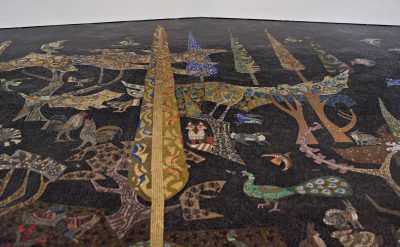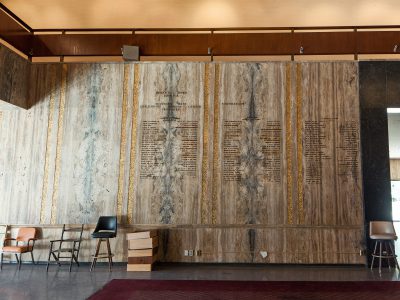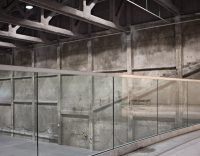The multifaceted Millard Sheets was one of the first of a group known as the California Scene Painters, part of a larger Regionalist movement from the 1930s to the 1960s that describes a representational style capturing scenes from everyday life. During the 1930s and 1940s, he and a small group of California artists developed a new style of watercolor painting and became known as the California Regionalist School. Throughout his life, Sheets would play a major role in bringing the art of California to the national arena.
The Architect Millard Sheets


Sheets was born in Pomona, California, on June 24, 1907. After graduating from the Chouinard Art Institute (now the California Institute of the Arts) in 1929, Sheets immediately garnered the attention of Dalzell and Ruth Hatfield of the Dalzell Hatfield Galleries in Los Angeles. Among the most influential art dealers on the West Coast, the Hatfield’s sponsored Sheets’s first one-man exhibition that same year and helped launch the artist’s painting career.
In 1932, Sheets was invited to teach at Scripps College in Claremont, and by 1936 Scripps had made him the head of the art department. By 1939, however, the United States began to prepare for the inevitability of involvement in the Second World War, and Sheets put his skills as an architectural designer to use designing seventeen air cadet training schools for the United States Army Air Corps between 1939 and 1941.
During World War II, Sheets left Scripps to serve as a wartime artist and journalist for Life magazine.
Sheets returned from the war in 1944 and resumed his position at Scripps College until 1955, when the Los Angeles County Board of Supervisors approached him to become the director of the new Los Angeles County Art Institute. He accepted the position and spent the next five years reshaping the mission and format of the school, renaming it the Otis Art Institute (later renamed the Otis College of Art and Design). The school also later became part of New York’s Parson’s School of Design.

Scottish Rite Masonic Temple lobby before renovation
In 1953, he founded Millard Sheets Designs, which employed a working staff of licensed architects and engineers, draftsmen, and artists. The studio completed over one hundred murals and mosaics throughout the United States, in and on the buildings he designed such as the national American Insurance Company offices for the California financier, Howard Ahmanson, Ahmanson Bank and Trust Company in Beverly Hills, forty-two Home Savings and Loan Association Buildings, private residences, and the Scottish Rite Memorial Temples in Los Angeles and San Francisco, among many others. Millard Sheets died on March 31, 1989, in Gualala, California.
– Tony Sheets



